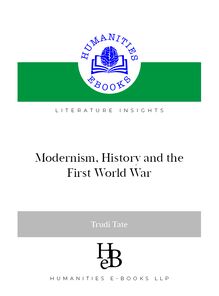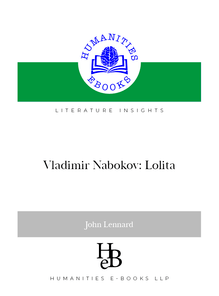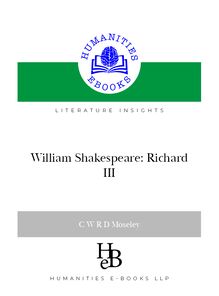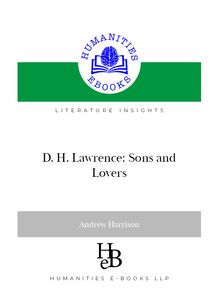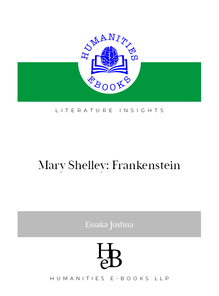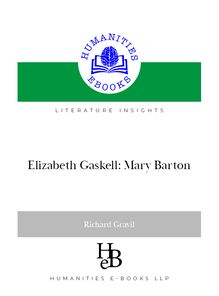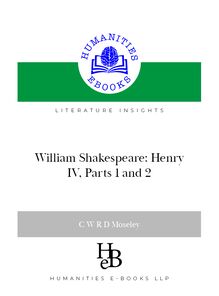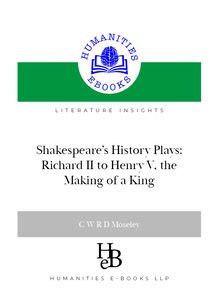-
 Univers
Univers
-
 Ebooks
Ebooks
-
 Livres audio
Livres audio
-
 Presse
Presse
-
 Podcasts
Podcasts
-
 BD
BD
-
 Documents
Documents
-
- Cours
- Révisions
- Ressources pédagogiques
- Sciences de l’éducation
- Manuels scolaires
- Langues
- Travaux de classe
- Annales de BEP
- Etudes supérieures
- Maternelle et primaire
- Fiches de lecture
- Orientation scolaire
- Méthodologie
- Corrigés de devoir
- Annales d’examens et concours
- Annales du bac
- Annales du brevet
- Rapports de stage
La lecture à portée de main
116 pages
English
Découvre YouScribe en t'inscrivant gratuitement
Je m'inscrisDécouvre YouScribe en t'inscrivant gratuitement
Je m'inscris
Obtenez un accès à la bibliothèque pour le consulter en ligne
En savoir plus
En savoir plus
116 pages
English
Obtenez un accès à la bibliothèque pour le consulter en ligne
En savoir plus
En savoir plus

Description
Reading Thomas Hardy Selected Poems Neil Wenborn Literature Insights General Editor : C W R D Moseley Readingt *This book is designed to be read in single page view, using the µ¿W SDJH¶ FRPPDQG *To navigate through the contents use the hyperlinked ‘BookPDUNV¶ DW WKH OHIW RI WKH VFUHHQ *7R VHDUFK FOLFN WKH PDJQLI\LQJ JODVV V\PERO DQG VHOHFW µVKRZ DOO UHVXOWV¶ *)RU HDVH RI UHDGLQJ XVH &75/ /! WR HQODUJH WKH SDJH WR IXOO VFUHHQ DQG UHWXUQ WR QRUPDO YLHZ XVLQJ (VF ! *+\SHUOLQNV LI DQ\ DSSHDU LQ %OXH 8QGHUOLQHG 7H[W Permissions Q@RWKLQJ LV WRR WULYLDO RU WRR 3 FRPPRQSODFH IRU WKHLU DUW¶ Indeed, it is perhaps the greatest paraGR[ RI +DUG\¶V SRHWU\ WKDW LW HPERGLHV DQ DI¿UPDWLRQ RI WKH TXRWLGLDQ UHDOLWLHV RI OLIH ZLWKLQ D VXVWDLQHG YLVLRQ RI WUDQVLHQFH XQOLNH DQ\WKLQJ HOVH LQ (QJOLVK OLWHUDWXUH 1 Quotedin Harold Orel, ed.,Critical Essays on Thomas Hardy’s Poetry (New York & Oxford: Maxwell Macmillan, 1995), 52–3. 2Dylan Thomas: The Caedmon Collection, Harper Audio, CD 5, track 16. 3 Anonymousreview inThe Nation, 1915, quoted inCasebook, 69–70.
Sujets
Informations
| Publié par | Humanities eBooks |
| Date de parution | 11 janvier 2021 |
| Nombre de lectures | 0 |
| EAN13 | 9781847602138 |
| Langue | English |
Informations légales : prix de location à la page 0,0250€. Cette information est donnée uniquement à titre indicatif conformément à la législation en vigueur.
Extrait
Reading Thomas HardySelected Poems
Neil Wenborn Literature Insights General Editor : C W R D Moseley
Readingt
*This book is designed to be read in single page view, using the ‘ît page’ command. *To navigate through the contents use the hyperlinked ‘Book-marks’ at the left of the screen. *To search, click the magnifying glass symbol and select ‘show all results’. *For ease of reading, use <CTRL+L> to enlarge the page to full screen, and return to normal view using < Esc >. *Hyperlinks (if any) appear in Blue Underlined Text.
Permissions
Your purchase of this ebook licenses you to read this work on-screen. No part of this publication may be otherwise reproduced or transmitted or distributed without the prior written permission of both the copyright owner and the publisher. You may print one copy of the book for your own use but copy and paste functions are disabled. Making or distributing copies of this book would constitute copyright infringement and would be liable to prosecution. Thank you for respecting the rights of the author.
LiteratureinsightsgeneraLeditor: C W r d MoseLey
Reading Thomas Hardy: Selected Poems
Neil Wenborn
HEB☼Humanities-Ebooks
Copyright
© Neil Wenborn, 2012
The Author has asserted his right to be identiîed as the author of this Work in accordance with the Copyright, Designs and Patents Act 1988.
First published byHumanities-Ebooks, LLP, Tirril Hall, Tirril, Penrith CA10 2JE
ISBN 978-1-84760-213-8 PDF ISBN 978-1-84760-214-5 Kindle
Contents
The Author
Abbreviations
Introduction
1. Hardy in his Time 1.1 Life and Work 1.2 The Historical Background 1.3 The Literary Context 2. ‘Collecting Old Poems and Making New’ 2.1. Composition 2.2 Publication 3. Reading Hardy’s Poetry 3.1 Wessex Poems and Other Verses 3.2 Poems of the Past and the Present 3.3 Time’s Laughingstocks and Other Verses 3.4 Satires of Circumstance / Lyrics and Reveries 3.5 Moments of Vision and Miscellaneous Verses 3.6 Late Lyrics and Earlier 3.7 Human Shows / Far Phantasies / Songs, and Triles 3.8 Winter Words in Various Moods and Metres 4. Hardy and the Critics 4.1 Criticism to 1940 4.2 Criticism after 1940 5. Glossary
7
8
9
15 15 21 24 29 29 33 36 36 42 52 59 71 84 89 93 99 99 102 109
6
Reading Thomas Hardy
6. Bibliography 6.1 Main Text 6.2 Reference Works 6.3 Biography and Letters 6.4 Criticism
112 112 112 112 113
The Author
Neil Wenborn graduated in English from Magdalene College, Cambridge, and worked at the Bodleian Library in Oxford before pursuing a career in publishing, becoming Editorial Director of one of the UK’s leading independent publishers. Since 1989 he has been a freelance writer and publishing consultant and has published widely both in Britain and in the United States. His works include biogra-phies of Haydn, Stravinsky and Dvořák. He is co-editor of the highly respectedHistory Today Companion to British History (Collins & Brown) andA Dictionary of Jewish–Christian Relations(Cambridge University Press), as well as of the poetry anthologyContourlines: New Responses to Landscape in Word and Image(Salt Publishing). A collection of his poetry,Firedoors, is published by Rockingham Press. Neil Wenborn is the author ofJane Austen: Emmathe in Literature Insights series.
8
Reading Thomas Hardy
Abbreviations
Bailey: J. O. Bailey,The Poetry of Thomas Hardy: A Handbook and Commentary(Chapel Hill: Univ. of North Carolina Press, 1970) Casebook: James Gibson & Trevor Johnson, eds,Thomas Hardy: Poems: A Casebook(London & Basingstoke: Macmillan, 1979) Critical Heritage: R. G. Cox, ed.,Thomas Hardy: The Critical Heritage(London & New York: Routledge, 1979) HLLVP: Dennis Taylor,Hardy’s Literary Language and Victorian Philology(Oxford: Clarendon Press, 1993) HMVP: Dennis Taylor,Hardy’s Metres and Victorian Prosody(Oxford: Clarendon Press, 1988) L: Thomas Hardy,The Collected Letters of Thomas Hardy(7 vols), ed. Richard Little Purdy & Michael Millgate (Oxford: Clarendon Press, 1978–88) LLE: Thomas Hardy,Late Lyrics and Earlier LW: Thomas Hardy,The Life and Work of Thomas Hardy, ed. Michael Millgate (London & Basingstoke: Macmillan, 1984) ORCH:Oxford Reader’s Companion to Hardy, ed. Norman Page (Oxford: Oxford UP, 2000) PPP: Thomas Hardy,Poems of the Past and the Present
All references to the poems are to James Gibson’s edition ofThe Complete Poems of Thomas Hardy (London & Basingstoke: Macmillan, 1976). The poem numbering is identical in James Gibson’sThe Variorum Edition of The Complete Poems of Thomas Hardy(London & Basingstoke: Macmillan, 1979). The author and publishers gratefully acknowledge the authors, editors and publishers of these sources, and of the other publications which are listed in the bibliography.
Introduction
Selected Poems
9
Thomas Hardy’s poetry is unique in English literature as the work of an indisputably major novelist who is also an indisputably major poet. Running to almost a thousand poems, not including the epic verse dramaThe Dynasts, it is one of the most distinctive bodies of verse in the canon. It has also been one of the most controver-sial. Since its îrst appearance in the closing years of the nineteenth century, critics and readers alike have stumbled over its awkward-nesses or been seduced by its idiosyncratic music, have denigrated it as technically inept or celebrated its elaborate craftsmanship. It has been read as the work of a proto-modernist and as an archetype of the Victorian intellectual odyssey; as the enabling condition for contemporary poetry and as responsible for a poverty of ambition in twentieth-century British verse. At once direct and elusive, tradi-tional and modern, the acme of artiîce and a conduit of intense emo-tion, it remains a critical enigma. The closer one looks at it, the more it seems to escape classiîcation, the more its contradictions multiply. Hardy was a poet before he was a novelist and he saw poetry as his principal vocation, yet he began to publish his verse only when his novel-writing years were over, and it was almost universally regarded at the time, as it has often been popularly regarded since, as an appen-dix to his prose. Hardy’s prodigious poetic output between his middle îfties and his death at the age of eighty-seven constitutes perhaps the most remarkable late owering in the history of English poetry. But he had already been writing verse for more than thirty years by the time he îrst placed it before the public, and the eight collections he produced in the following thirty years typically intersperse newly written poems with others of earlier, sometimes much earlier, origin (see 2.1 and 2.2 below). Hardy’s poetry thus straddles a period of rapidly changing sen-sibilities: an oeuvre with its roots in the age of Swinburne, Arnold and Meredith, it found its readership in the age of Yeats, Eliot and Pound.
10
Reading Thomas Hardy
Hardy is both a great traditionalist and a great innovator. Perhaps no other English poet has drawn so comprehensively on the metrical traditions of his predecessors to produce a corpus so formally vari-ous and inventive. His complete poems deploy nearly 800 different metrical forms, more than 600 of which are stanzaic forms of his own 1 devising. Traditional English forms, including several derived from hymns and traditional ballads, jostle with classical metres, French romance forms and exotic imports like the Persian ghazal. At the same time, Hardy is capable of handling his metrical resources with a freedom so unsettling to the expectations they generate that crit-ics have often regarded it as carelessness. On a îrst reading, lines can seem overcrowded or accents wrenched out of true, and it is not uncommon for a poem’s metre to become clear only after we have read it all the way through (and not always then: one of his great-est poems, After a Journey [289], has famously resisted numerous attempts to scan it). Deeply suspicious of what he called ‘the jew-elled line’, Hardy was committed to an aesthetic of disruption, of the ‘intentionally rough-hewn’; D. H. Lawrence, indeed, wrote of him as a poet who had gone some way towards answering Synge’s call 2 for ‘the brutalising of English verse’. It is one of the paradoxes of his poetry that Hardy’s technical sophistication thus co-exists with a kind of customized awkwardness, a homemade quality which could remind F. R. Leavis of the Poet’s Corner in a provincial newspaper. The verbal texture of the poetry, too, is unlike anything else in the canon. Hardy had a collector’s passion for words. As a young poet learning his craft in the 1860s, he compiled extensive word-lists from his reading of other poets, and recent scholarship has revealed the depth of his connection with contemporary developments in phil-ology. His poems draw their vocabulary from an unprecedentedly wide range of sources. Archaisms sit alongside coinages and tech-nical terms, neologisms next to rarities, poeticisms, and local and dialect words. As Hardy’s friend, the critic William Archer, acutely
1 See Dennis Taylor’s entry on ‘Metrics’ inORCH, 273. 2 Letter to Edmund Gosse, 4 February 1919, quoted inCasebook, 34;L,vi, 159; The English Review, Nov. 1911, quoted in Donald Davie,Thomas Hardy and British Poetry(London: Routledge & Kegan Paul, 1973), 139.
-
 Univers
Univers
-
 Ebooks
Ebooks
-
 Livres audio
Livres audio
-
 Presse
Presse
-
 Podcasts
Podcasts
-
 BD
BD
-
 Documents
Documents
-
Jeunesse
-
Littérature
-
Ressources professionnelles
-
Santé et bien-être
-
Savoirs
-
Education
-
Loisirs et hobbies
-
Art, musique et cinéma
-
Actualité et débat de société
-
Jeunesse
-
Littérature
-
Ressources professionnelles
-
Santé et bien-être
-
Savoirs
-
Education
-
Loisirs et hobbies
-
Art, musique et cinéma
-
Actualité et débat de société
-
Actualités
-
Lifestyle
-
Presse jeunesse
-
Presse professionnelle
-
Pratique
-
Presse sportive
-
Presse internationale
-
Culture & Médias
-
Action et Aventures
-
Science-fiction et Fantasy
-
Société
-
Jeunesse
-
Littérature
-
Ressources professionnelles
-
Santé et bien-être
-
Savoirs
-
Education
-
Loisirs et hobbies
-
Art, musique et cinéma
-
Actualité et débat de société
- Cours
- Révisions
- Ressources pédagogiques
- Sciences de l’éducation
- Manuels scolaires
- Langues
- Travaux de classe
- Annales de BEP
- Etudes supérieures
- Maternelle et primaire
- Fiches de lecture
- Orientation scolaire
- Méthodologie
- Corrigés de devoir
- Annales d’examens et concours
- Annales du bac
- Annales du brevet
- Rapports de stage
Signaler un problème
YouScribe
Le catalogue
Le service
© 2010-2024 YouScribe
